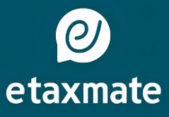
In today’s digital age, many individuals are turning to side hustles to earn extra income alongside their primary jobs or studies. Whether it’s freelancers, Youtubers, or earning through affiliate marketing, these alternative income streams have gained massive popularity.But with income comes responsibility — and the most important question is:
How do you report such income for tax purposes in India?In this blog, we’ll break down how freelancers, YouTubers, and affiliate marketers can report their income, the two tax filing options available, and how to stay compliant while optimizing your taxes.
💡 Freelancer, YouTuber & Affiliate Income is Treated as ‘Professional Income’
If you’re earning through freelance projects, content creation, or affiliate links, your income is treated as professional income under the Income Tax Act. That means you must report it either by:
- Maintaining books of accounts and filing ITR-3, or
- Opting for presumptive taxation under Section 44ADA and filing ITR-4
Let’s break down each option:
✅ Option 1: Maintain Books of Accounts & File ITR-3
This is the traditional method. You need to maintain detailed records of your income and expenses and prepare:
- Profit & Loss Account
- Balance Sheet
- Expense ledgers
- Invoices and receipts
✍️ Eligible Deductions:
You can claim actual expenses incurred for earning income, such as:
- Internet and phone bills
- Equipment (laptop, camera, etc.)
- Software subscriptions
- Rent for home office
- Marketing costs
- Travel and utility expenses
After deducting eligible expenses, your net profit is taxed under the normal slab rates. Filing is done via ITR-3.
Best suited for: Professionals with high income and significant expenses.
✅ Option 2: Presumptive Taxation under Section 44ADA (File ITR-4)
This simplified scheme allows eligible professionals to declare 50% of gross receipts as taxable income.
📋 Features:
- No need to maintain books of accounts
- No need to claim actual expenses
- File return using ITR-4
- 50% of gross receipts treated as profit, taxed as per slabs
Best suited for: Freelancers and creators with lower expenses who prefer simplicity.
🚀 Turnover Limit Increased to ₹75 Lakh (If 95% Digital)
The normal limit under Section 44ADA is ₹50 lakh, but if 95% or more receipts are digital, the limit is extended to ₹75 lakh.
💳 Eligible digital receipts include:
- UPI payments
- Bank transfers
- Credit/debit cards
- Payment gateways (PayPal, Razorpay, etc.)
Ensure all receipts are traceable through banking channels to benefit from this extended limit.
📌 Who Can Use Section 44ADA?
Eligible professions include:
- Legal, medical, engineering
- Accountancy, interior design, architecture
- IT freelancers, graphic designers, writers
- YouTubers and affiliate marketers (if content is skill-based)
Note: If you sell products or physical goods, you fall under business income, not professional income.
💡 Other Key Tax Considerations for Freelancers & Creators
🔸 TDS Deductions & Form 26AS
Many clients/platforms (Google, Amazon, Upwork) deduct TDS on payments. You can view this in:
- Form 26AS
- Annual Information Statement (AIS)
This TDS can be claimed as credit when filing your return.
🔸 Advance Tax Liability
We’ve written a detailed blog explaining what advance tax is, who should pay, due dates, and how to calculate it.
👉 https://etaxmate.in/avoid-hefty-interest-your-smart-guide-to-paying-advance-tax-on-time/
🔸 GST Applicability
If your gross receipts exceed ₹20 lakh (₹10 lakh in special states), you may be required to:
- Register for GST
- Charge GST on Indian invoices
- File monthly/quarterly GST returns
Export of services (e.g., income from Google or foreign clients) is zero-rated but may still require registration.
🔸 Maintain a Dedicated Bank Account & Reconcile UPI
- Use a PAN-linked bank account for receiving professional income
- Keep track of UPI/PayPal/Stripe receipts
- Reconcile total income with your Form 26AS and AIS
- Maintain transparency in case of audit or scrutiny
⚠️ Common Mistakes to Avoid:
- ❌ Ignoring small freelance or affiliate income
- ❌ Filing ITR-1 instead of ITR-3 or ITR-4
- ❌ Not paying advance tax
- ❌ Missing TDS credit in Form 26AS
- ❌ Claiming expenses under 44ADA (not allowed)
- ❌ Not reporting foreign income (YouTube, Fiverr, Upwork)
✅ Final Tips
- Choose the correct ITR form (ITR-3 or ITR-4)
- Maintain records, even if filing under presumptive scheme
- Pay advance tax timely to avoid penalties
- Monitor Form 26AS and AIS for reporting and reconciliation
- Seek help from a tax consultant if needed — especially if you have foreign income, high receipts, or GST obligations
💬 Just because it’s a side hustle doesn’t mean it’s outside the tax net. Be smart, be compliant, and enjoy your success stress-free.
🤝 Still Confused? We’re Here to Help!
If you’re unsure which option is right for you, or need help navigating taxes as a freelancer, YouTuber, or affiliate marketer — we’re here to guide you professionally.
👉 Connect with us today for expert support and hassle-free compliance.
✅ Email: help@etaxmate.in, Phone: +91 7389176127
🌐 Website: etaxmate.in
